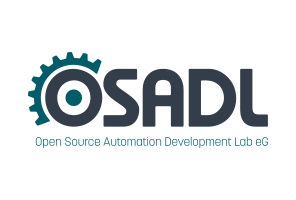Dates and Events:
|
OSADL Articles:
2023-11-12 12:00
Open Source License Obligations Checklists even better nowImport the checklists to other tools, create context diffs and merged lists
2022-07-11 12:00
Call for participation in phase #4 of Open Source OPC UA open62541 support projectLetter of Intent fulfills wish list from recent survey
2022-01-13 12:00
Phase #3 of OSADL project on OPC UA PubSub over TSN successfully completedAnother important milestone on the way to interoperable Open Source real-time Ethernet has been reached
2021-02-09 12:00
Open Source OPC UA PubSub over TSN project phase #3 launchedLetter of Intent with call for participation is now available |
Real Time Linux Workshops
1999 - 2000 - 2001 - 2002 - 2003 - 2004 - 2005 - 2006 - 2007 - 2008 - 2009 - 2010
Tenth Real-Time Linux Workshop on October 29 to November 1st, 2008, in Guadalajara, Mexico
A Student Lab for Rapid Control Prototyping with RTLinux and the Simulink Target for Realtime Linux (STRTL)
Peter Reiter, Klaus Oppermann, Daniel Schleicher, Bernhard G. Zagar
The proposed paper presents how RTLinux and STRTL can beneficially be utilized within student lab exercises geared towards the use of modern software development tools. Because we consider it important for students of engineering subject to get familiar with a typical development process. In a particular lab course, in the mechatronics curriculum, students should run through all phases of control system design, code generation and implementation with the MATLAB/Simulink environment and the STRTL interface. Using commercial rapid prototyping tools (e. g. dSpace, LabView,. . . ) causes rather high software licens- ing and hardware fees. Especially at universities money is scarce. Hence to reduce the costs a tutorial to use a low cost rapid control prototyping based on open source software is described in this paper. First of all the main parts of the system hardware setup, rapid control prototyping and STRTL toolbox are introduced. Then short introductory examples are presented to demonstrate the functionality of the system and to become acquainted with the developing environment.
The main part comprises extended student lab exercises. These exercises (basic i/o routines, digital signal processing examples and closed-loop-controller design) should train the students in model identification, controller design, simulation and finally compare the simulation results with the real hardware. We conclude our paper with some remarks and the reference to our website where the examples can be downloaded freely.




